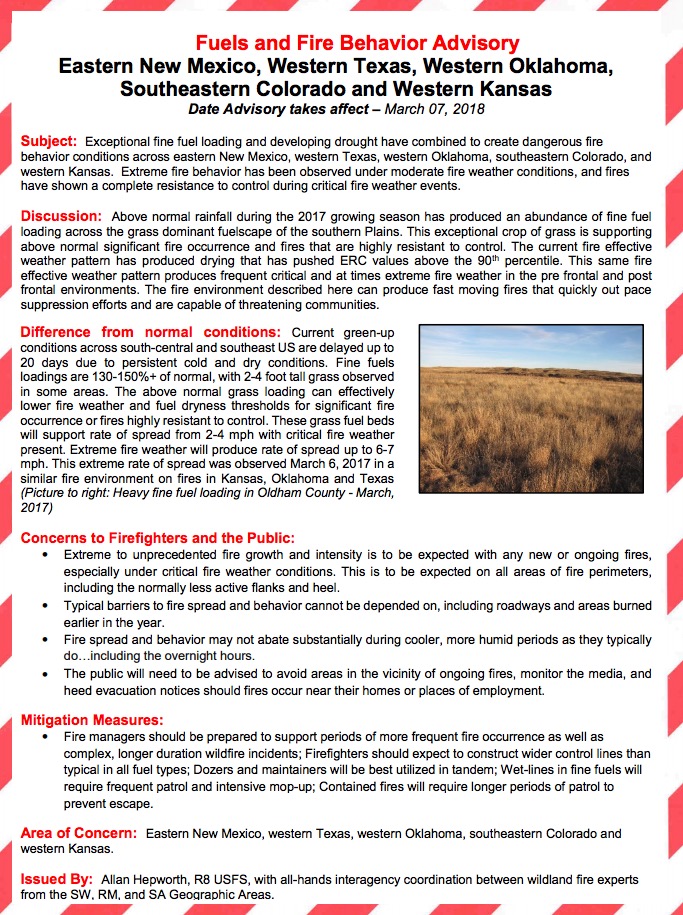A confluence of weather and vegetation conditions in the Southern Great Plains has led to a situation where large rapidly spreading wildfires are possible, and are already occurring in some areas.
The information below is derived from the “Fuels and Fire Behavior Advisory for Eastern New Mexico, Western Texas, Western Oklahoma, Southeastern Colorado, and Western Kansas” that was effective March 7, 2018:
- Drought: Developing drought in recent months has led to very dry fuels.
- Delayed green-up: Current green-up conditions across the south-central and southeast US are delayed up to 20 days due to persistent cold and dry conditions. Fires would normally be slowed during this period by new, green grass.
- Fuel loading: Above normal rainfall during the 2017 growing season produced an abundance of fine fuel loading across the grass-dominant southern Plains. This exceptional crop of grass is supporting above normal significant fire occurrence and fires that are highly resistant to control.
- Weather: These grass fuel beds will support rate of spread from 2-4 mph with critical fire weather present. Extreme fire weather will produce rate of spread up to 6-7 mph. This extreme rate of spread was observed March 6, 2017 in a similar fire environment on fires in Kansas, Oklahoma and Texas.
A copy of the Advisory is below:
This article has been modified to note that the advisory was issued by Allan Hepworth, R8 USFS, with all-hands interagency coordination between wildland fire experts from the SW, RM, and SA Geographic Areas.



There are 2 pages to the advisory, and the bottom of the first page shows “published by” with the author’s name, and correctly notes that it was an interagency effort. Having been in on some of the conference calls, there were representatives from fed and state agencies throughout the advisory area involved in planning and implementing the advisory.
Thanks. We didn’t see that earlier, and made the change in the article.